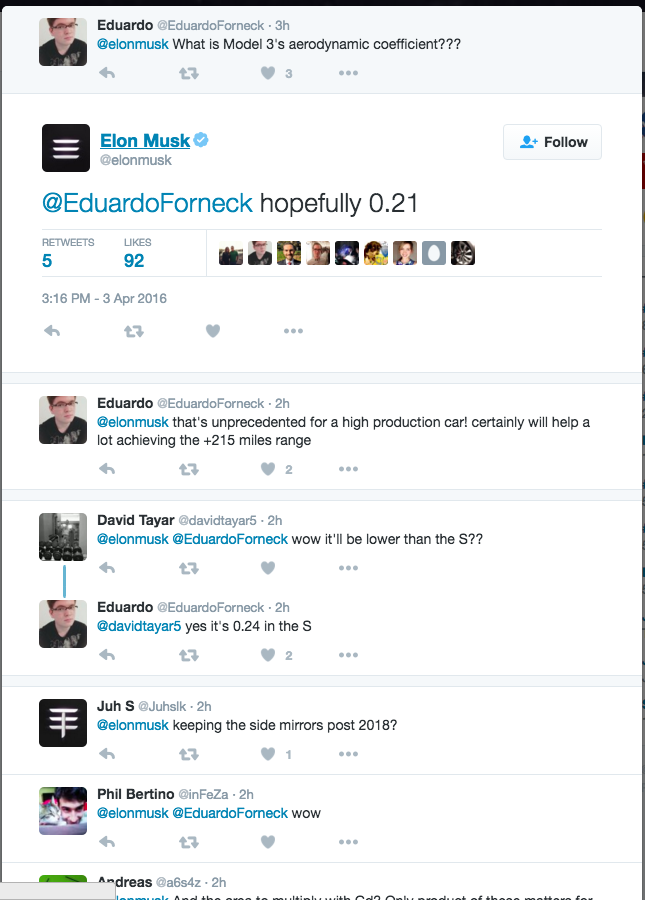- Here's what we know:
- EM states base Model 3 gets 215 miles of range
- Model s Range is already published
- EPA Range for 70 is 230
- EPA Range for 70D is 240
- 90D is 288
- P90D is 270
- From one of the "first ride" videos, the driver states there will be single and dual motor options. Therefore we have to assume that the base model is a single motor unit.
Extrapolation:
I took some liberties here but I think my assumptions come out to a reasonable conclusion. The main assumption I came up with is that the Model 3 will be 20% more efficient than the Model S (due to a lower weight and lower drag coefficient).
Model S 70 (non-D) gets 3.285 miles per kw (230 / 70). If the model 3 is 20% more efficient, that comes to 3.94 miles per kw. Given the 215 base range you can back into a 55kw base pack.
- efficiencies of dual motor give you 4.11 mpkw, resulting in 226 mile range
The largest model S pack is 30% larger than the small pack. Applying this to the model 3, you get a large pack of 71.5kw. (This fits in quite nicely with a 70 kw pack they already designed, manufacture and sell). I applied the same math of efficiency to the 70kw pack and come up with 274.6 mile range for the M3 70D and a 257 mile range for the top of the line PM3 70DL.
Second exercise: Assume the model 3 is 30% more efficient:
- Base 50kw gets a range of 213.5
- 50D gets a range of 222.9
- 70D gets a range of 297.44 (Matching the specs leaked on electric.co)
- P70D gets 278.9




